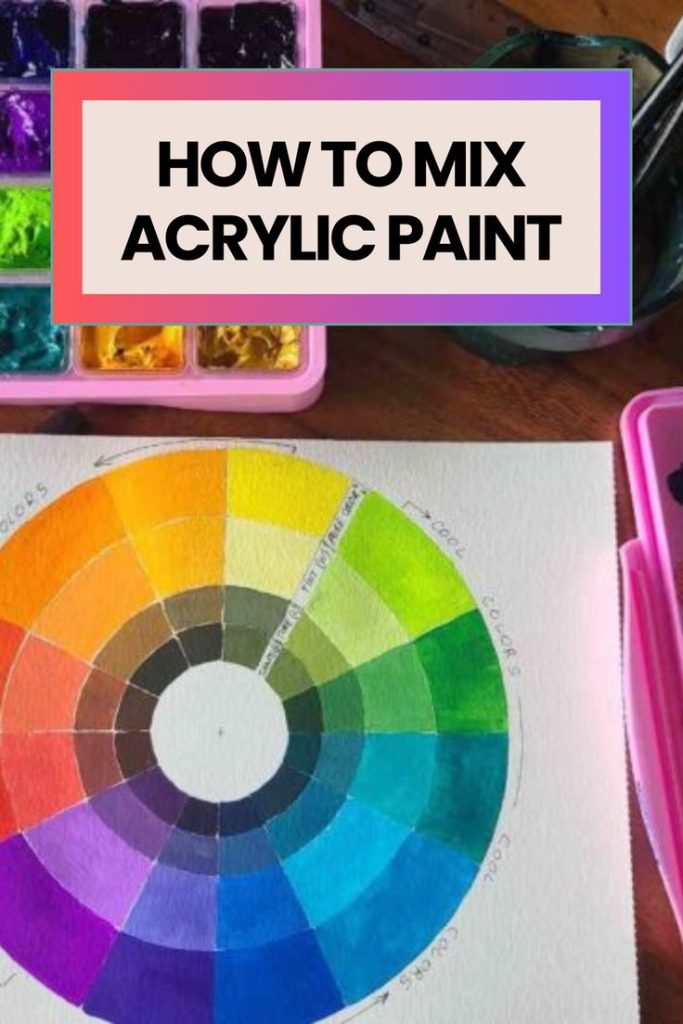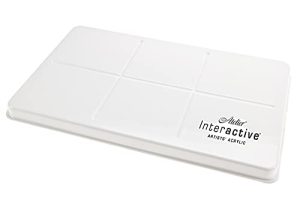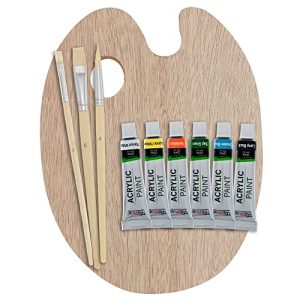Acrylic paint is popular among artists. It is versatile and easy to use. One of the most exciting aspects of acrylic paint is mixing colors. This guide will teach you everything about mixing colors with acrylic paint. Let’s get started!
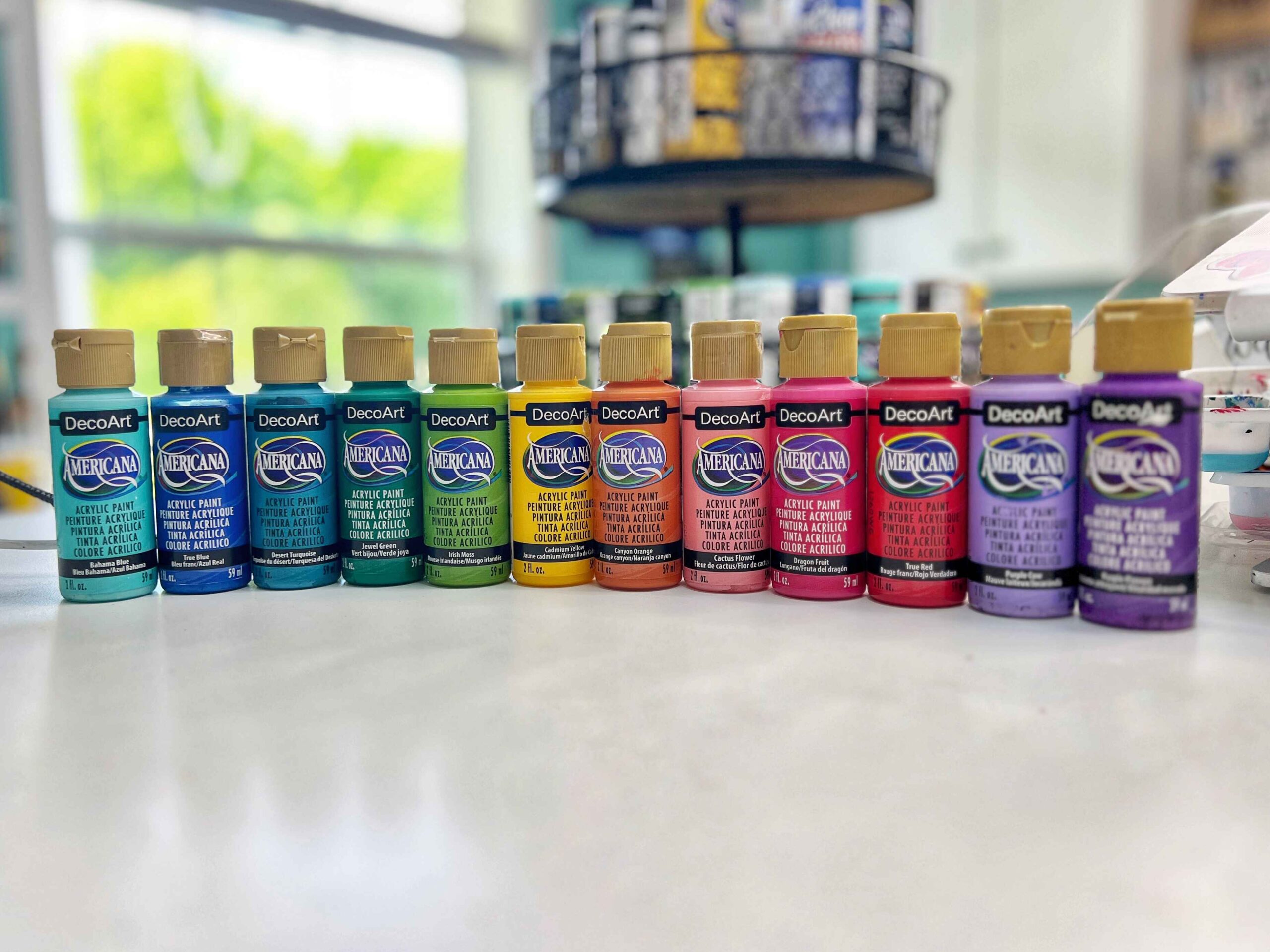
Credit: southernadoornmentsdecor.com
Why Mix Colors?
Mixing colors allows you to create unique shades. You can achieve depth and realism in your artwork. It also saves you money by reducing the need to buy many different colors. Let’s explore the basics first.
Basic Color Theory
Understanding color theory is essential. It helps you mix colors effectively.
Primary Colors
Primary colors are red, blue, and yellow. You cannot create these colors by mixing other colors.
Secondary Colors
Secondary colors are made by mixing two primary colors. They are green, orange, and purple.
- Red + Blue = Purple
- Blue + Yellow = Green
- Yellow + Red = Orange
Tertiary Colors
Tertiary colors are made by mixing a primary and a secondary color. Examples include red-orange and blue-green.
Mixing Techniques
There are different techniques for mixing colors. Here are some common methods.
Palette Mixing
Palette mixing is done on a palette. You blend colors with a palette knife or brush. This technique is great for creating custom shades.
Layering
Layering involves applying one color over another. This technique creates depth and texture. It is useful for creating shadows and highlights.
Dry Brushing
Dry brushing involves using a dry brush with little paint. This technique creates a rough texture. It is ideal for adding details and texture.
Color Mixing Tips
Here are some helpful tips for mixing colors.
Start With Small Amounts
Always start with small amounts of paint. It is easier to add more paint than to remove it.
Use A Palette Knife
A palette knife is great for mixing paint. It allows you to blend colors evenly. It also keeps your brushes clean.
Experiment With Ratios
Mix different ratios of colors to see what you get. This helps you understand how colors interact.
Keep A Color Journal
Keep a journal of your color mixes. Note the ratios and results. This helps you replicate colors in the future.
Common Color Mixes
Here are some common color mixes to get you started.
Skin Tones
Mix red, yellow, and white to create skin tones. Adjust the amounts for different shades.
Natural Greens
Mix blue and yellow to create green. Add a bit of red for a more natural look.
Warm Browns
Mix red, yellow, and blue to create brown. Adjust the ratios for warm or cool browns.
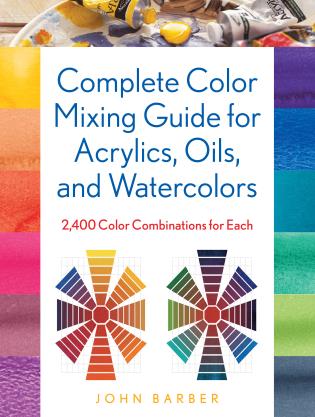
Credit: atlaspreservation.com
Advanced Techniques
Once you master the basics, try these advanced techniques.
Glazing
Glazing involves applying a thin, transparent layer of paint. This technique creates depth and richness. Use it to enhance colors and add luminosity.
Scumbling
Scumbling involves applying a thin layer of paint with a dry brush. This technique creates a soft, broken effect. It is great for creating texture and atmosphere.
Impasto
Impasto involves applying thick layers of paint. This technique creates a textured, three-dimensional effect. Use a palette knife for best results.
Common Mistakes to Avoid
Avoid these common mistakes when mixing colors.
Using Dirty Brushes
Always clean your brushes between colors. Dirty brushes can muddy your colors.
Overmixing
Overmixing can result in dull colors. Stop mixing when you achieve the desired shade.
Ignoring Color Theory
Understanding color theory is crucial. It helps you mix colors effectively. Always keep the basics in mind.
Tools and Supplies
Here are some essential tools and supplies for mixing colors.
Palette
A palette is essential for mixing colors. Choose one with a smooth surface for easy cleaning.
Palette Knife
A palette knife is great for mixing paint. It allows you to blend colors evenly.
Brushes
Different brushes create different effects. Keep a variety of brushes for different techniques.
Water And Paper Towels
Keep water and paper towels handy. They are useful for cleaning brushes and thinning paint.
Frequently Asked Questions
What Colors Make Brown With Acrylic Paint?
Mix red, blue, and yellow to get brown.
How To Mix Skin Tones With Acrylic?
Combine red, yellow, and white. Add blue for depth.
Can You Lighten Acrylic Paint Colors?
Yes, add white to lighten any acrylic paint color.
How To Darken Acrylic Paint?
Mix in a small amount of black or complementary color.
Conclusion
Mixing colors with acrylic paint is both fun and rewarding. Understanding color theory and using the right techniques are key. Practice regularly and experiment with different mixes. Soon, you’ll create beautiful, unique colors for your artwork. Happy painting!

